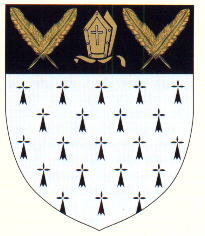Saint-Amand (Pas-de-Calais): Difference between revisions
Jump to navigation
Jump to search
Knorrepoes (talk | contribs) m (Text replace - "[[Literature" to "{{media}} [[Literature") |
Knorrepoes (talk | contribs) m (Text replace - "{|width="100%" style="color:black; background-color:#ffffcc;" |width="15%"|50 px|left |width="70%" align="center" |'''Heraldry of the World<br/>Civic heraldry of France - Armorial de France''' |width="15%"|[[Fil) |
||
| Line 1: | Line 1: | ||
{ | {{France}}'''SAINT-AMAND''' | ||
'''SAINT-AMAND''' | |||
Département : [[Pas-de-Calais]] | Département : [[Pas-de-Calais]] | ||
Revision as of 12:41, 11 December 2014
Template:FranceSAINT-AMAND
Département : Pas-de-Calais
Origin/meaning
The arms above were proposed in 1994 and are based on the arms of the Cardevacque family, who ruled the village for a long time. Their arms were ermine, with a chief of black. To distinguish the arms from the arms of the family, a mitre and two palm leaves are added to the chief. These are symbols for the local patron saint, St. Amand.
Contact and Support
Partners:
Your logo here ?
Contact us
© since 1995, Heraldry of the World, Ralf Hartemink 
Index of the site
Literature : Bouchet et al, 1994










